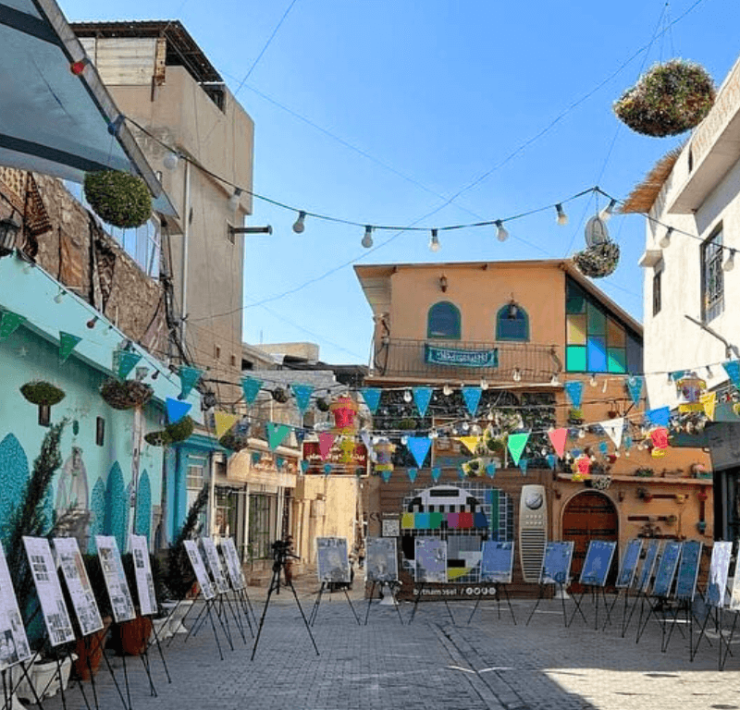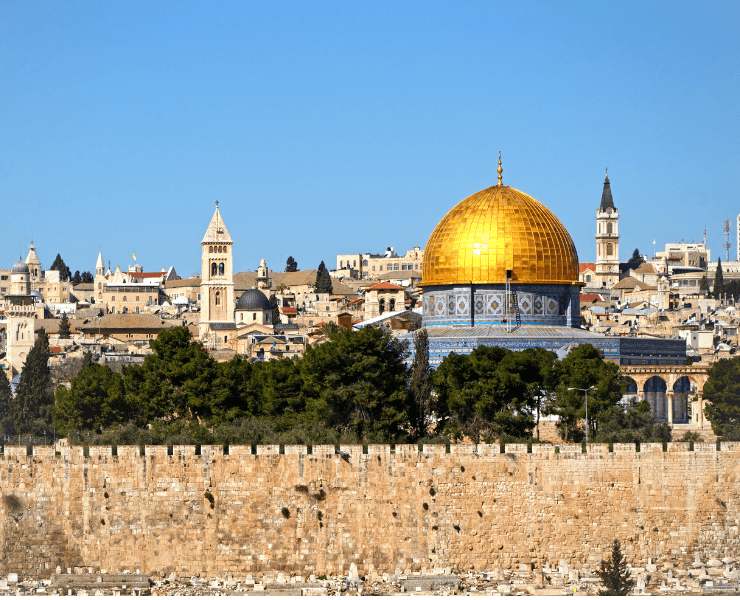Tatreez, or Palestinian embroidery, is a textile art form which consists of intricate geometric patterns made up of tiny cross stitches. It has been used to decorate thobes, the traditional dresses worn across parts of the Middle East, for thousands of years. The most detailed pieces using the most luxurious fabrics and threads were especially highly prized, especially as wedding gowns.
But tatreez is far more than just embroidery. Since the Nakba (which means catastrophe, referring to the mass displacement of hundreds of thousands of Palestinians by Israel in 1948), practicing tatreez has become a powerful political act of resistance. Because tatreez is endlessly adaptable while still retaining its distinctive and recognisable style, this form of embroidery has been used as a means of both self- and national expression.
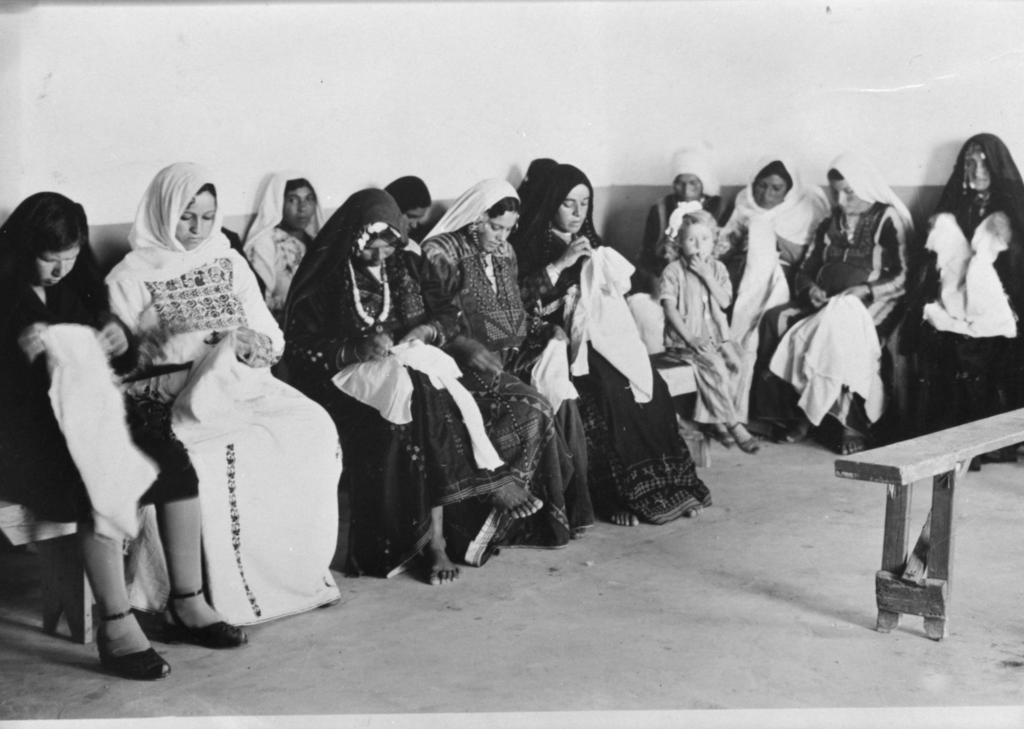
Prior to the occupation of Palestine, tatreez was principally used to express personal and local identity and to hint at the personality, style and social status of the wearer, but during the first Intifada, tatreez was put to explicitly political use.
New motifs were designed to symbolise resistance and the colours of the Palestinian flag, the outline of Palestine and the Dome of the Rock were used prominently as a display of national identity and pride. It continued even in the face of a ban on public expressions of Palestinian nationalism and depictions of the Palestinian flag itself, put in place by the Israeli government between 1967 and 1993.
Today, tatreez continues to provide a way for Palestinians across the world to connect with and display their identity, to connect with their heritage and to pass it on to the next generation. Tatreez is a practice of sumūd, steadfastness, using only a needle and thread. By continuing the tradition of tatreez, embroiderers resist dispossession, occupation and cultural erasure and display their heritage proudly. For supporters of the Palestinian cause, wearing, purchasing or learning about tatreez can be a way of showing solidarity and recognition while supporting artisans and their communities.
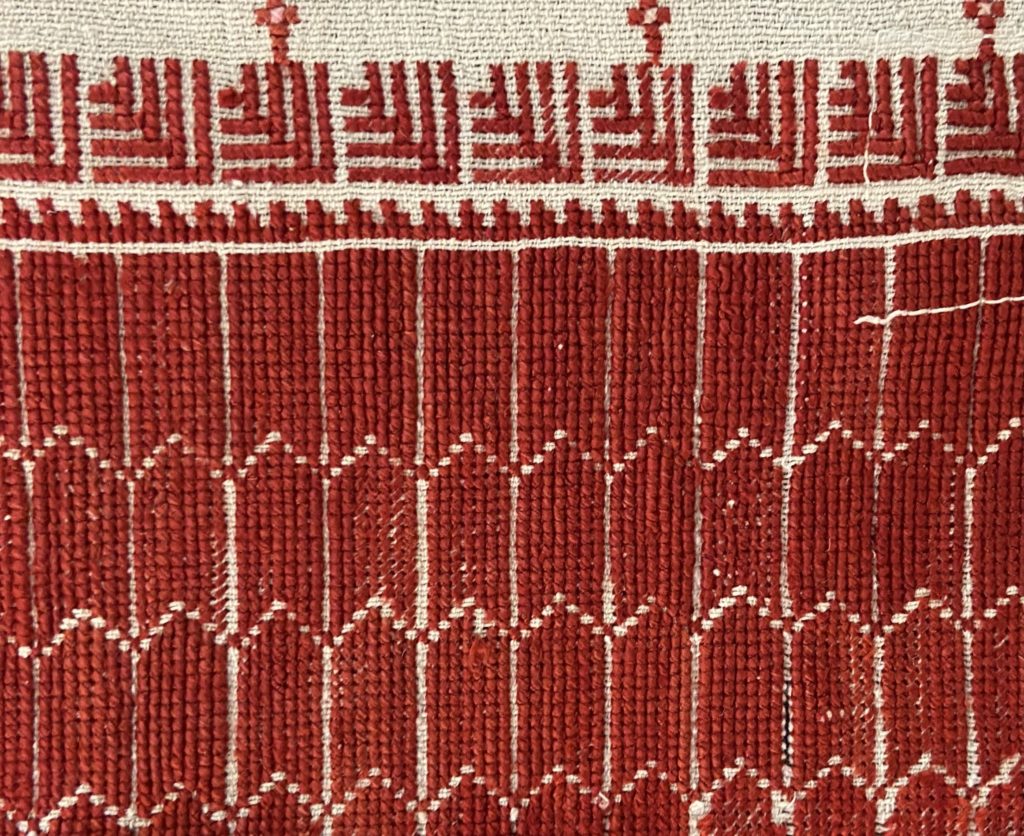
Hidden Symbols and the Language of Colour
Tatreez has existed as a complex art form rich in hidden codes and meanings since long before the Nakba. Tatreez doesn’t just create pretty patterns, this form of embroidery is a secret language, with each piece holding deep significance and layers of meaning. To a trained eye, the colours, fabric and motifs used on each dress can reveal everything there is to know about the wearer.
Historically, the use of colours in tatreez varied across the regions of Palestine, giving the first clue about where the wearer is from. Different areas preferred to stitch on undyed linen over dark fabric, or to use bright red thread (the most popular choice in Ramallah) over the brown-red tones favoured in areas like Khalil (Hebron). The threads for tatreez were traditionally dyed with natural pigments – powdered shells were used to obtain purple dye, pomegranate skins and insects give shades of red, while yellow tones can be made with grape leaves!
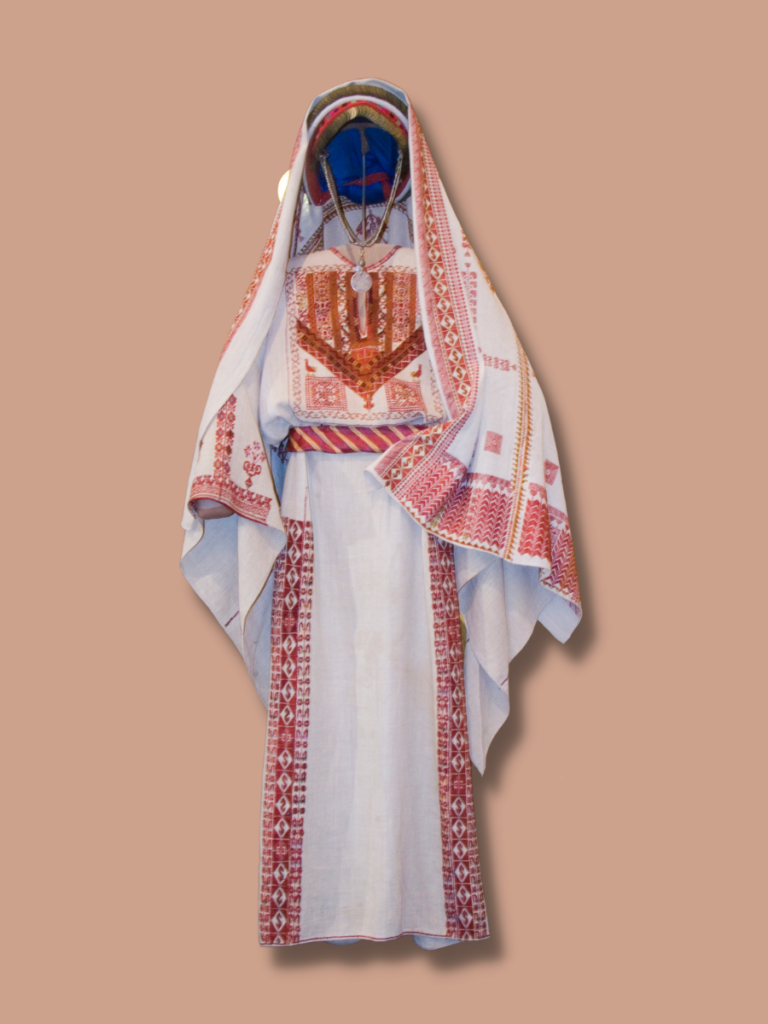
But the colours used in tatreez aren’t just selected for their beauty or according to the local trend; historically they also indicated a woman’s marital status and stage of life. Women would use the embroidery on their dresses to show whether they were single or married, and could even be used to hint that a widow was interested in remarrying.
For example, in some Bedouin tribes, unmarried women would work blue into the tatreez on their thobes, while married women would signal their marital status with red thread. If a widow wished to indicate publicly that she was considering remarrying, her embroidery might include blue patterns with red flowers worked around them. However, these signals varied from region to region, much like the dialects of a traditional language. In Hebron for example, older women would use the colour purple, while younger women and girls would embroider with green.
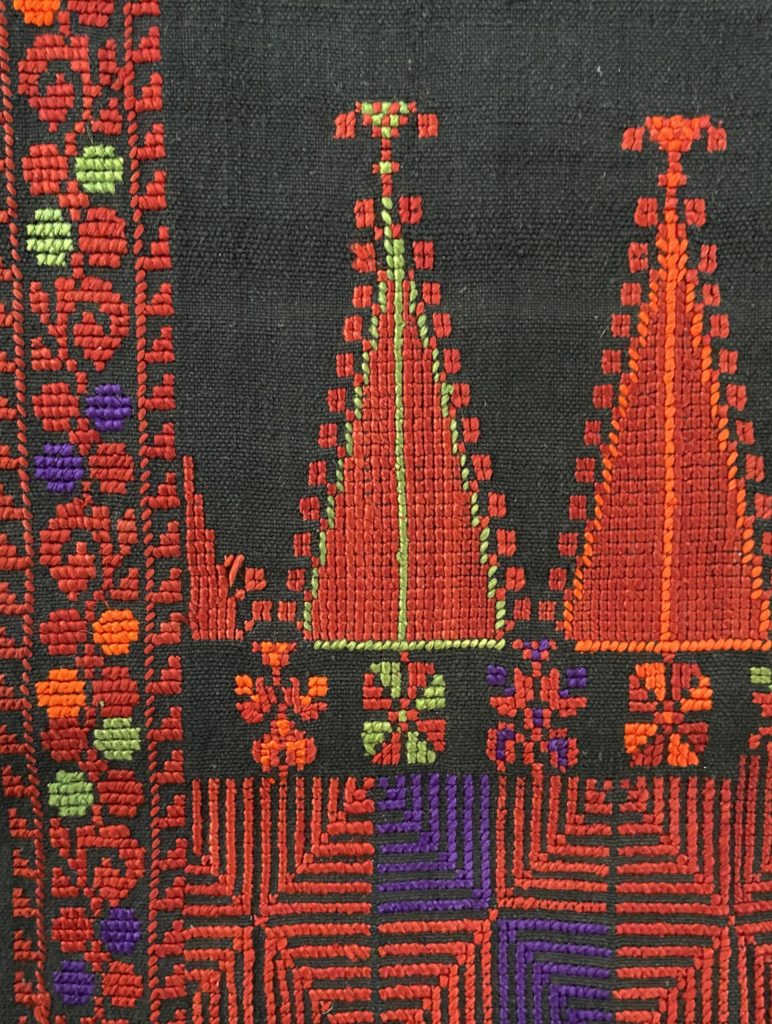
The delicate motifs used in tatreez add another coded layer of meaning to each piece of embroidery. There isn’t only diversity in the colours and fabrics used across different regions of Palestine – the motifs and techniques used vary from town to town as well, often allowing a dress to be linked to the place where it was made.
Motifs drew inspiration from the natural world surrounding them, often with very identifiable local influences. For example, the orange blossom motif was especially beloved among the women of Beit Dajan, a village famous for its orange orchards. Other examples include the Balāt Beit Lahem motif, which translates as ‘Tiles of Bethlehem’, and the Saru, or Cypress Tree pattern, a symbol of rural Palestine.
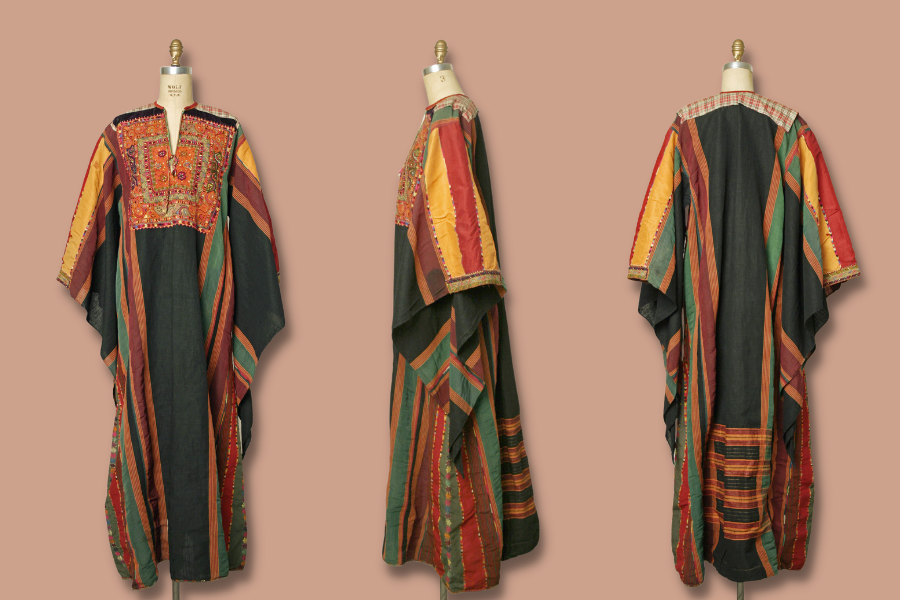
Tatreez Today
While today many save their intricately embroidered thobes for the most special of occasions, take a look at these amazing textile artists and designers who are incorporating tatreez into stunning modern clothing designs and items for daily use:
Leelaja
The collection at Leelaja effortlessly weaves traditional tatreez patterns into staple pieces of a modern wardrobe. From dresses to this gorgeous tee embellished with cypress tree motifs, Leelaja’s pieces are the perfect way to wear this beautiful craft.
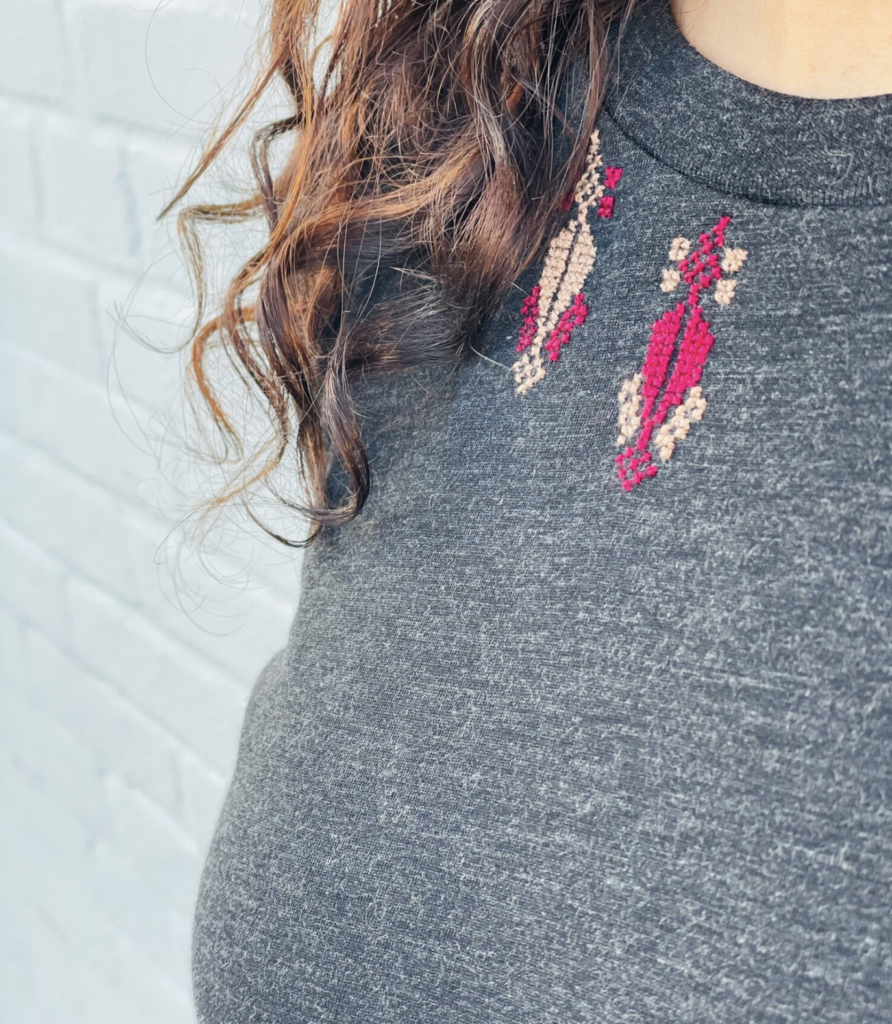
Sitti at the Pink Jinn Souq
The most stylish way to stay safe, these tatreez face masks from Sitti are hand-stitched by refugee women at Sitti Social Enterprise, who empower refugee communities through employment. They’re the perfect way to wear tatreez every day!
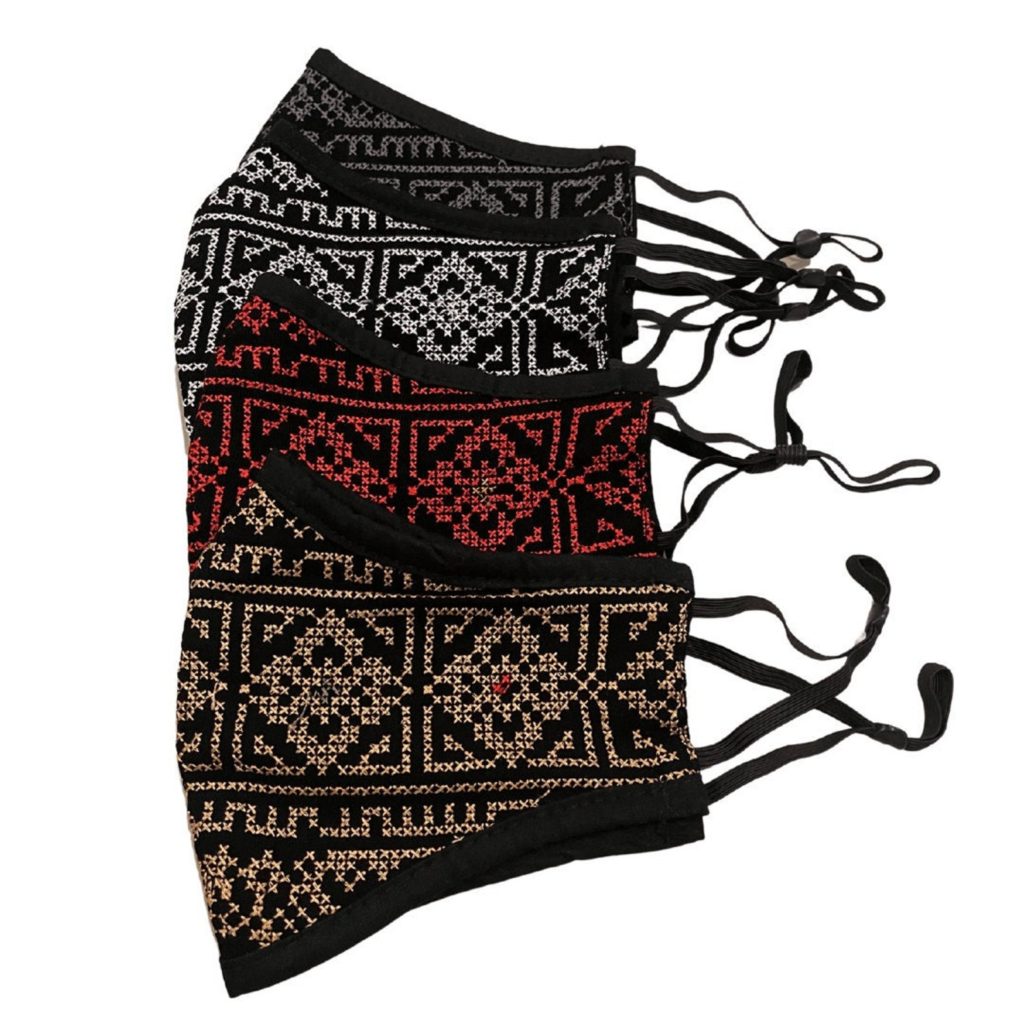
Deerah
Deerah’s stunning range includes everything from unbelievably intricate traditional thobes to striking blazers, jackets, and evening dresses.
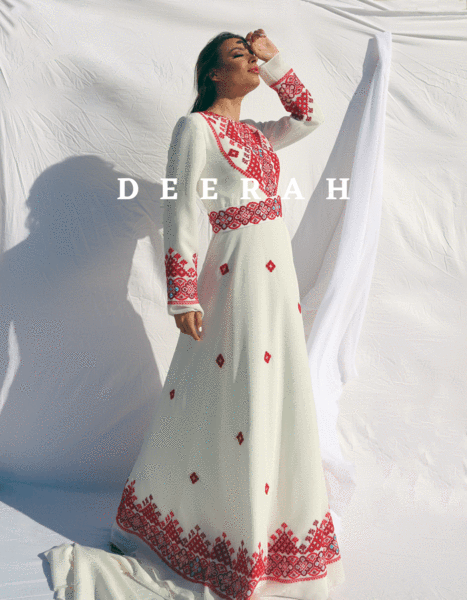
Natalie Tahhan
Natalie Tahhan’s Prints of Palestine collection merges traditional patterns from Ramallah, Hebron, Gaza, Jerusalem and Jaffa into bold, contemporary capes and jackets.
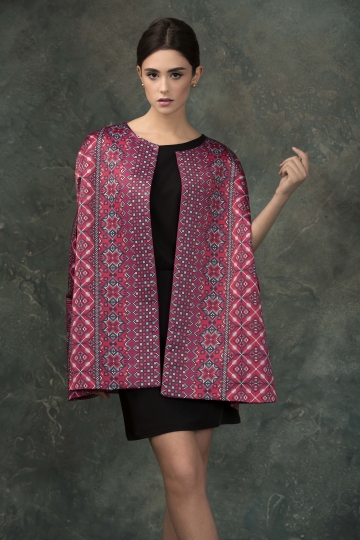
Atfaluna Society at Pink Jinn Souq
Keep a piece of Palestine close with one of these gorgeous hand-embroidered pouches made by the Atfaluna Society for Deaf Children in Gaza.
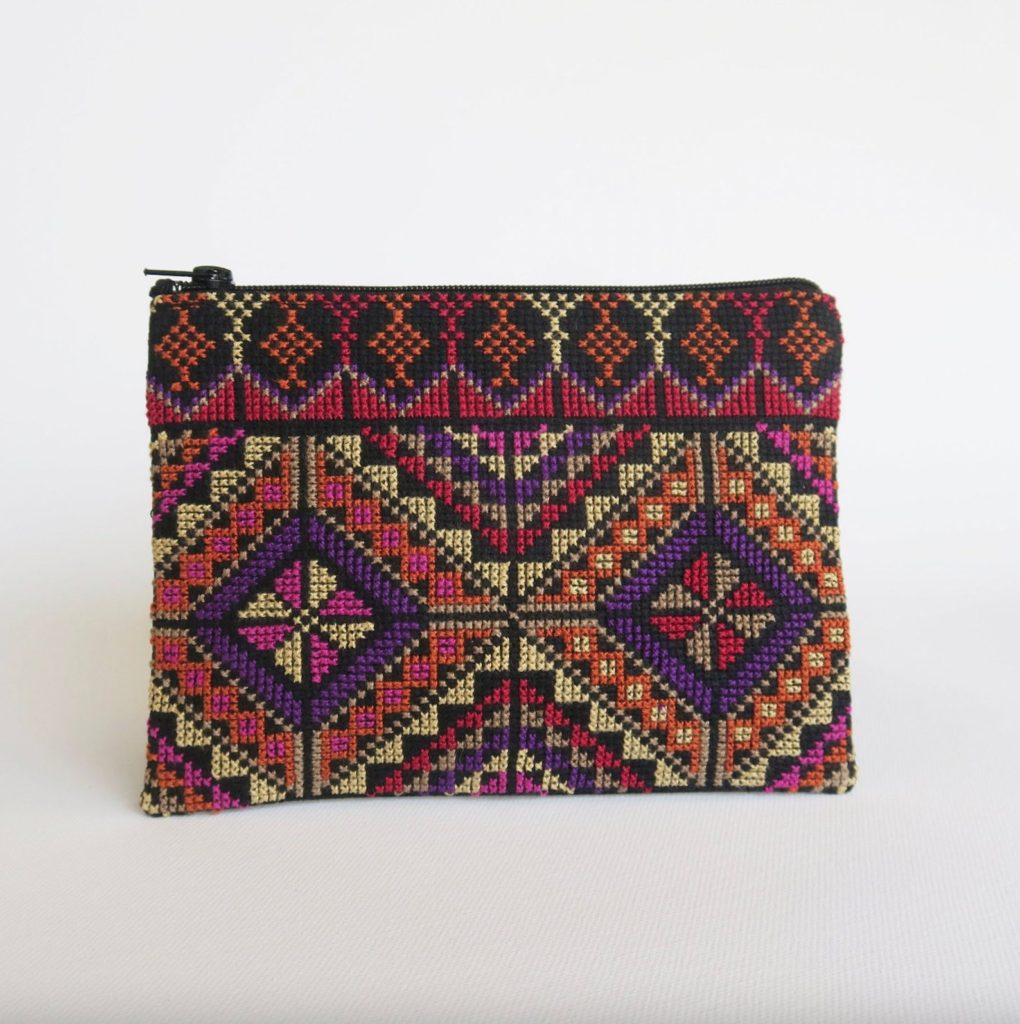
KUVRD
Tatreez goes modern at KUVRD with their collection of stylishly cut tops and dresses, hand-stitched denim jackets and tatreez-printed tees.
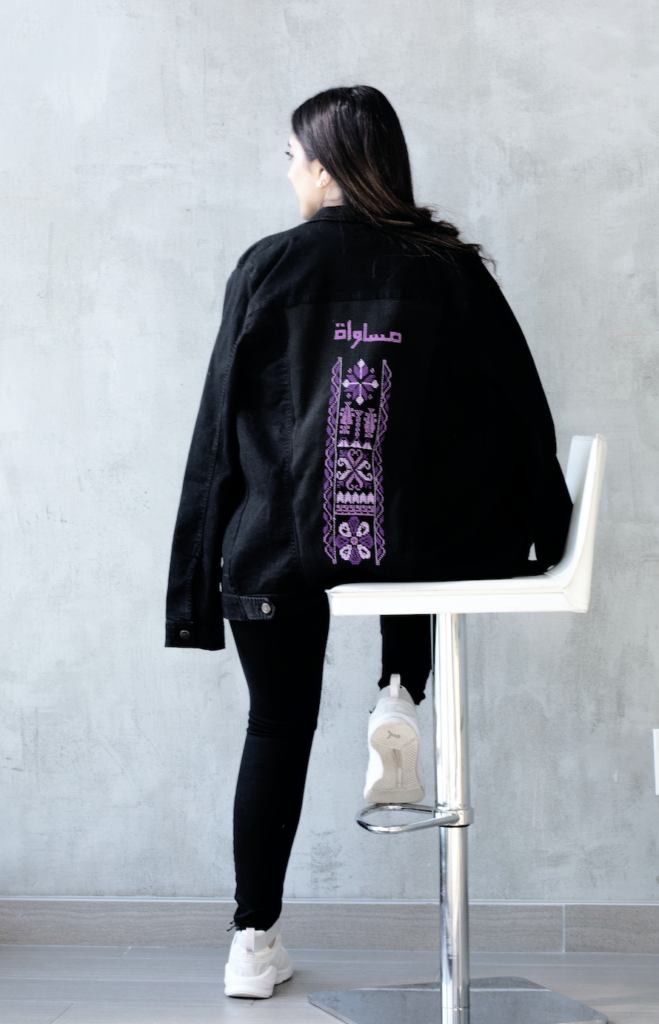
If you’re keen to learn more about tatreez, these books are the best place to get started:
- Embroidering Identities – A Century of Palestinian Clothing – *Free downloadable book* | Iman Saca in collaboration with Maha Saca and The Oriental Institute Museum of the University of Chicago
- Threads of Identity: Preserving Palestinian Costume and Heritage | Widad Kamel Kawar
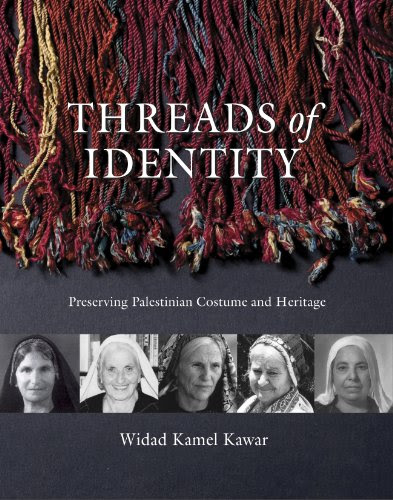
- Tatreez and Tea | Wafa Ghnaim
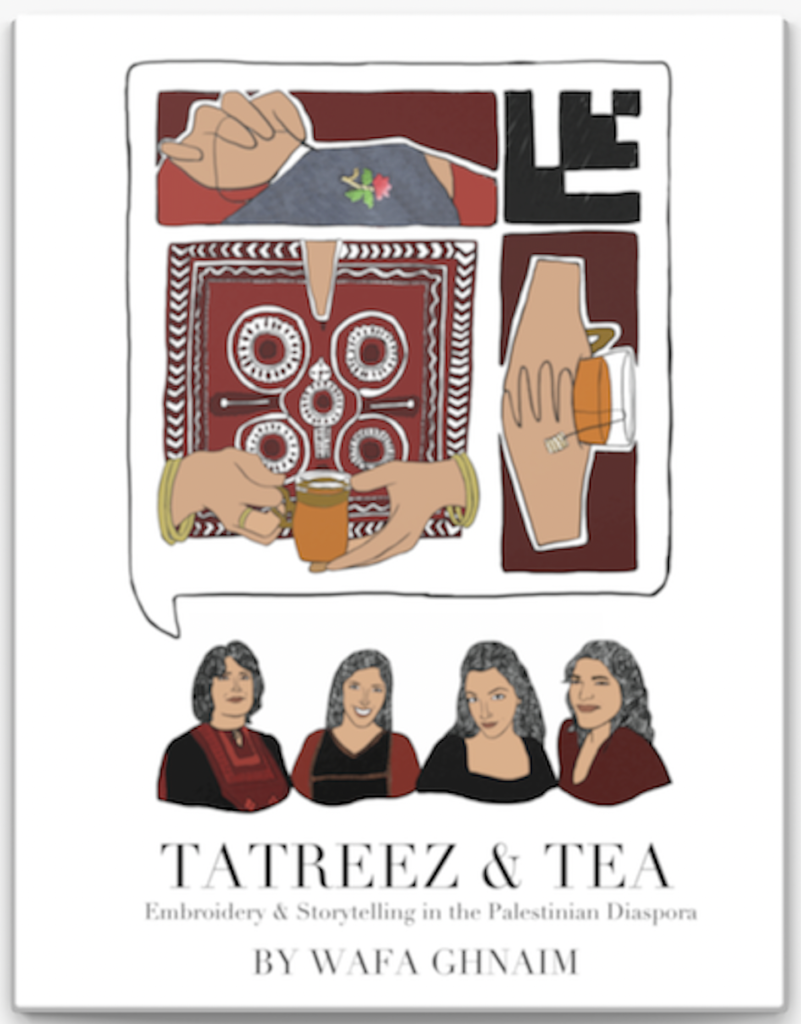
- The Art of Palestinian Embroidery | Leila Al Khalidi
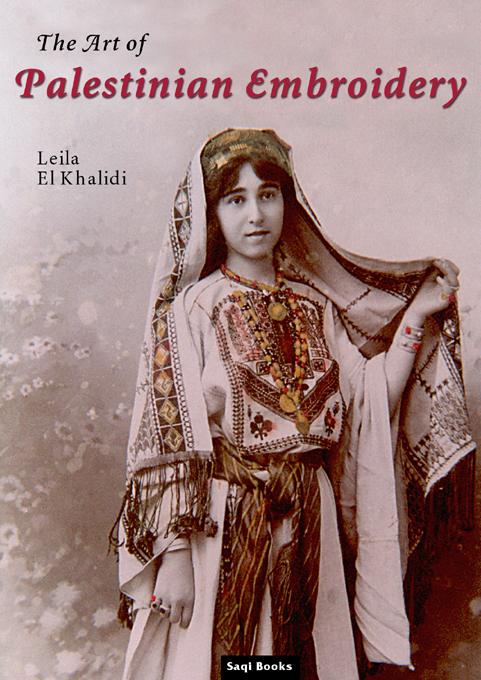
- Palestinian Embroidery Motifs: A Treasury of Stitches 1850-1950 | Margarita Skinner in collaboration with Widad Kawar
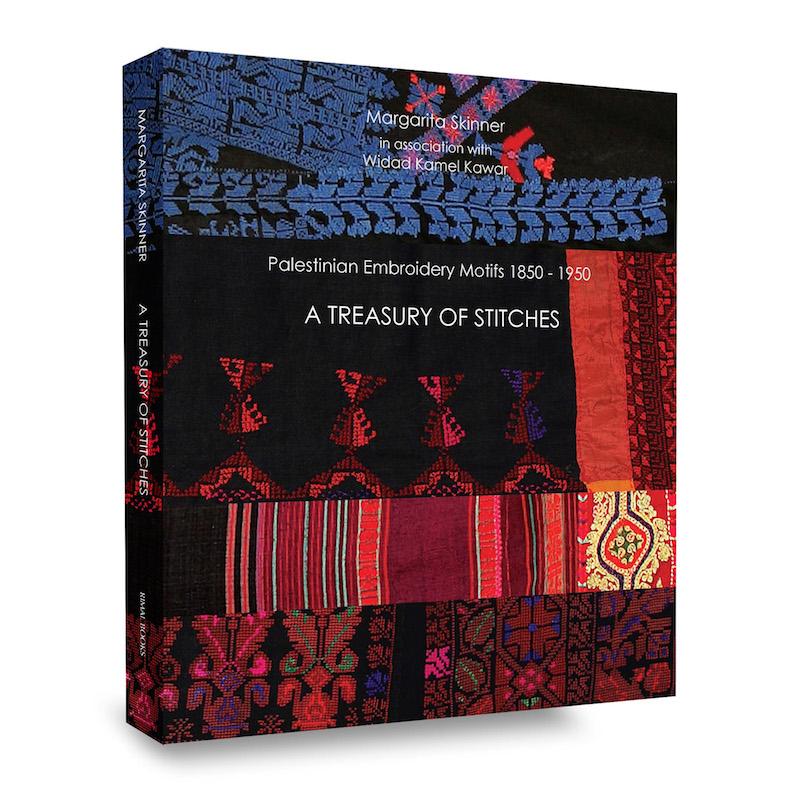
These are some amazing organisations working to preserve the art of tatreez:
- In’ash al Usra | Ramallah, Occupied Palestinian Territories
- Palestinian Heritage Centre | Bethlehem
- Tiraz Centre: The Widad Kamar Home for Arab Dress | Amman, Jordan
- Palestine Costume Archive | Canberra, Australia



